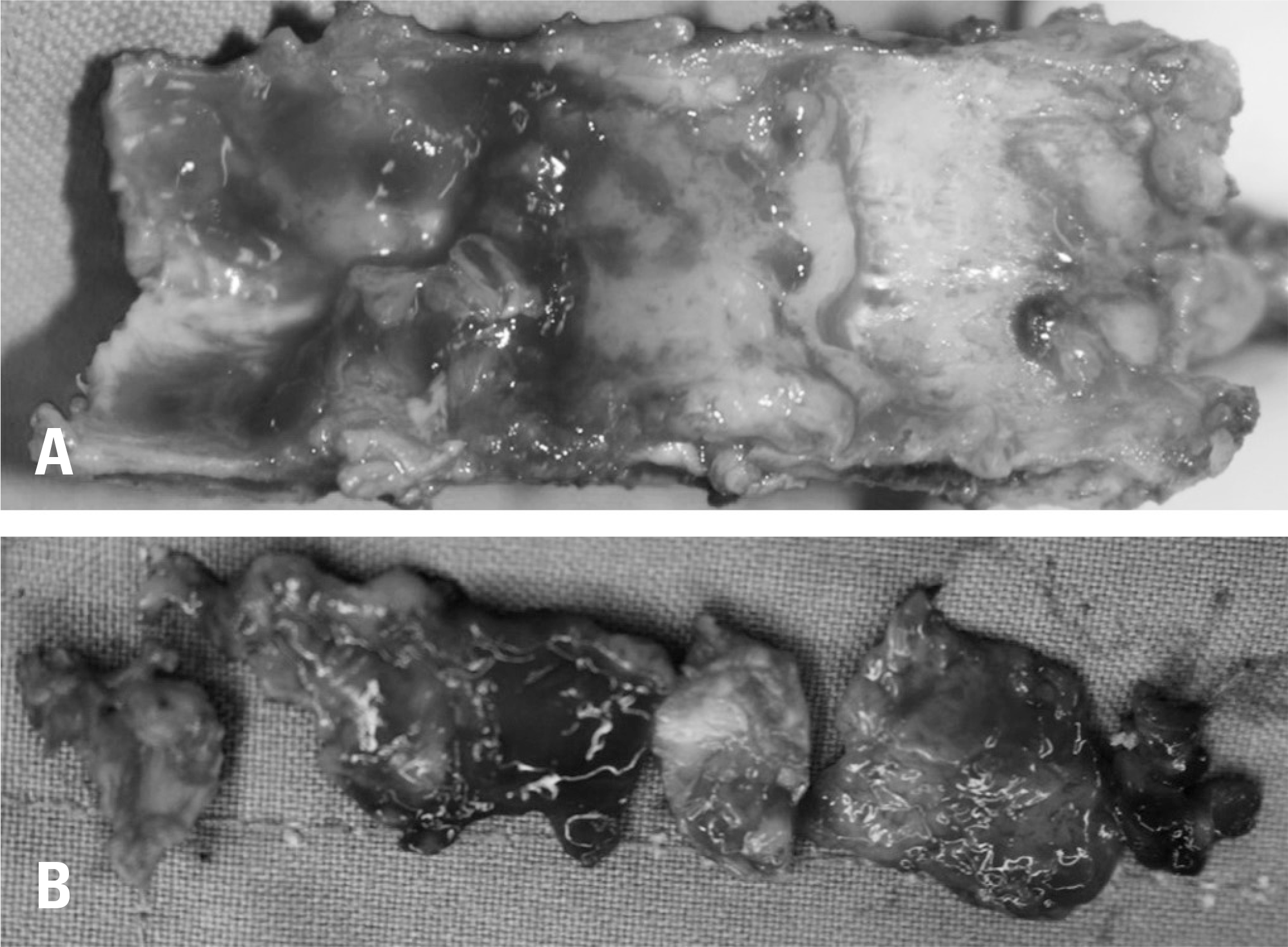Abstract
Summary of Literature Review
The incidence of extranodal invasion of lymphoma is very low, and spinal compression as a clinical symptom rarely occurs in extranodal lymphoma.
Materials and Methods
A 37-year-old woman who complained of neck pain that had lasted for the past 3 months with no underlying disease visited the hospital and was treated conservatively with medication and physical therapy. Even though the patient was given an epidural injection 1 month prior to visiting our hospital, the pain lingered and the cervical myelopathy became aggravated, so the patient was initially diagnosed with epidural hematoma. This predisposed the patient to treatment strategies such as laminectomy and fusion, but the patient was ultimately diagnosed with non-Hodgkin lymphoma.
REFERENCES
1. Freeman C, Berg JW, Cutler SJ. Occurrence and prognosis of extranodal lymphomas. Cancer. 1972; 29:252–60.

2. Aabo K, Walbom-Jorgensen S. Central nervous system complications by malignant lymphomas: radiation sched-ule and treatment results. Int J Radiat Oncol Biol Phys. 1986; 12:197–202.

3. Lim CC, Chong BK. Spinal epidural non-Hodgkin's lymphoma: case reports of three patients presenting with spinal cord compression. Singapore Med J. 1996; 37:497–500.
4. Cho JH, Cho DC, Sung JK, et al. Primary malignant lym-phoma in a spinal cord presenting as an epidural mass with myelopathy: a case report. Korean J Spine. 2012; 9:265–8.

5. Mally R, Sharma M, Khan S, et al. Primary Lumbosacral Spinal Epidural Non-Hodgkin's Lymphoma: A Case Report and Review of Literature. Asian Spine J. 2011; 5:192–5.

6. Kapoor R, Kumar V, Sharma SC. Primary extradural non-Hodgkin's lymphoma. JK Science. 2006; 8:45–8.
7. Braunistein EM, White SJ. Non-hodgkin's lymphoma of bone. Radiology. 1980. 59–63.
Fig. 1.
Sagittal images of (A) T1-weighted, (B) T2-weighted, and (C) contrast-enhanced magnetic resonance imaging showed intermediate signal intensity on T1- and T2-weighted images, and homogeneous high signal intensity on contrast-enhanced images. An epidural spinal tumor was located at the C5-T1 level.

Fig. 2.
Gross picture of the epidural mass. Soft, red-colored, gel-like materials were obtained from the epidural space. (A) Anterior to the C5-C7 lamina, adhesion of the soft mass was observed, and (B) marginal excision of the mass surrounding the dura was performed.

Fig. 3.
Histology and immunohistochemistry. (A) Tumor cells infiltrated diffusely except for a very focal area (arrow), which showed a follicular structure (×12.5). (B) On a high-power view (×400), the tumor cells consisted of centrocytes (white arrow head) and centroblasts (black arrow head). There were more than 15 centroblasts per high-power field.





 PDF
PDF ePub
ePub Citation
Citation Print
Print


 XML Download
XML Download